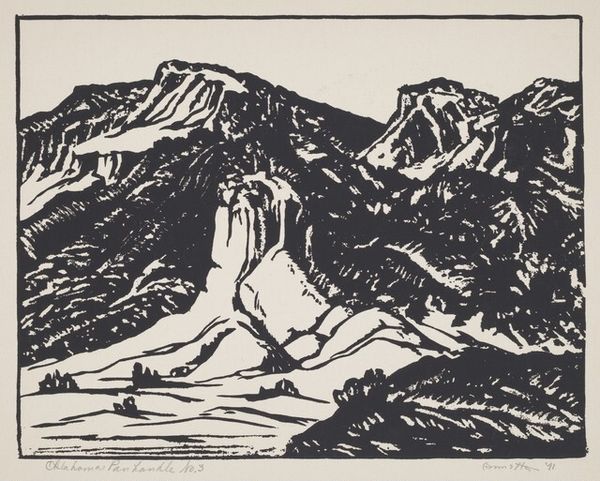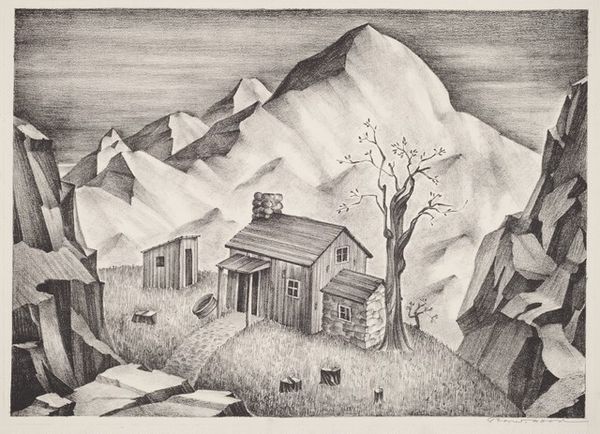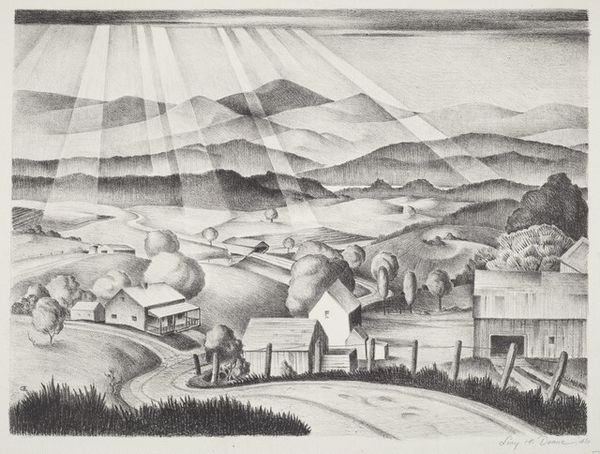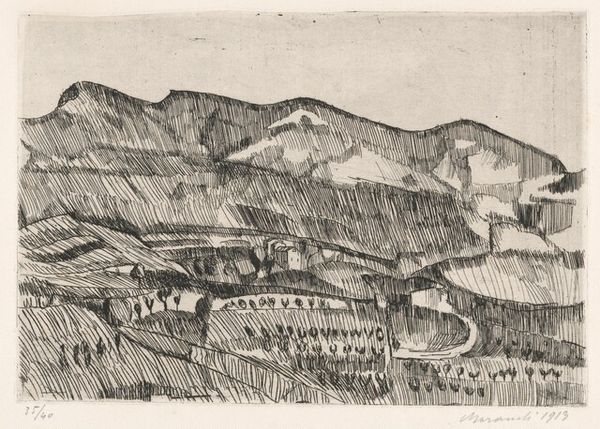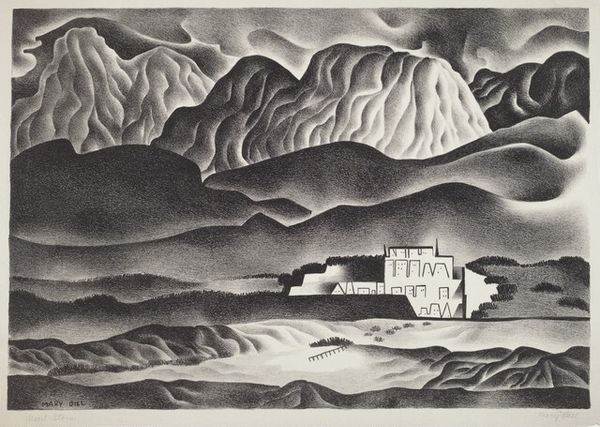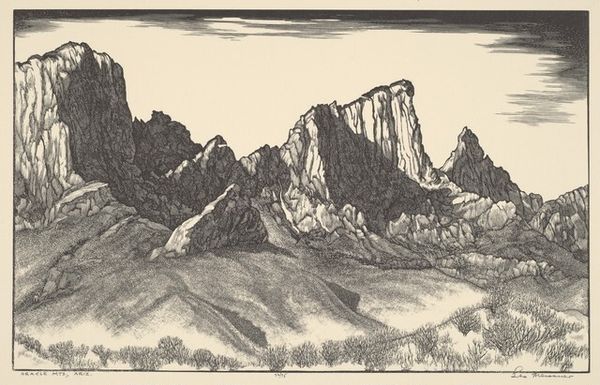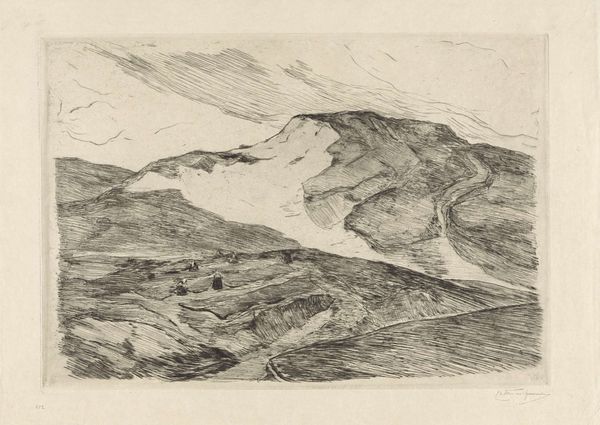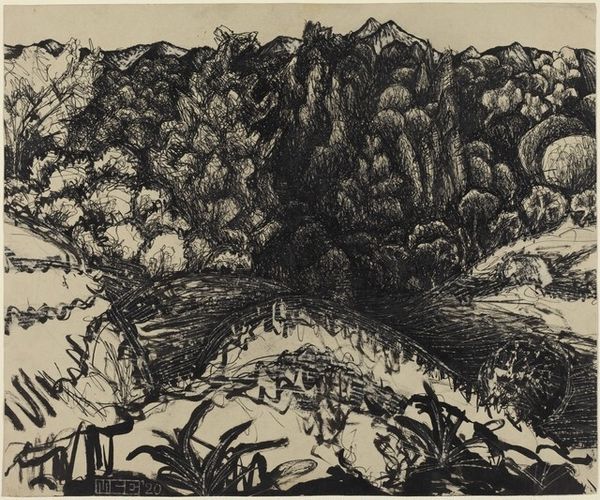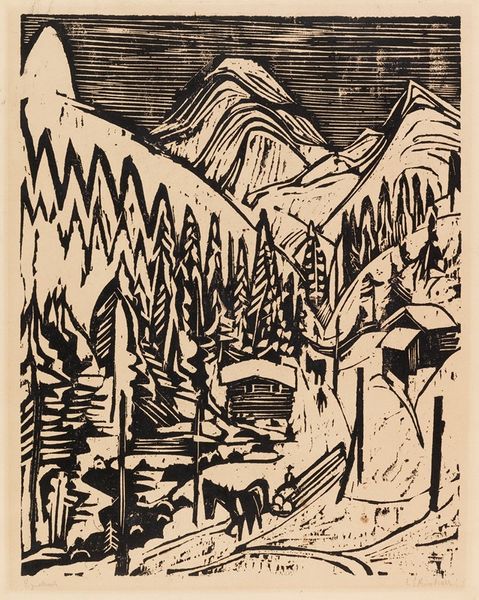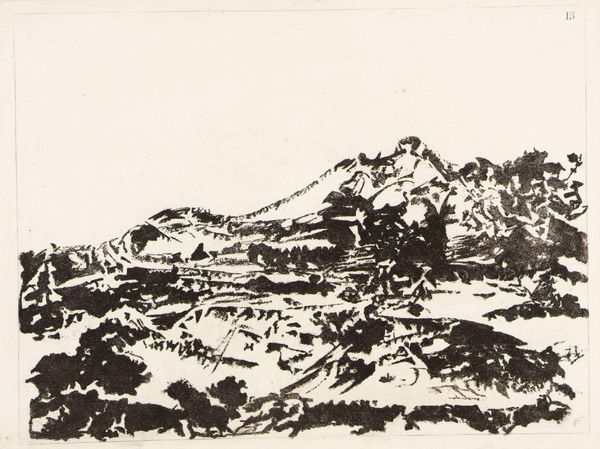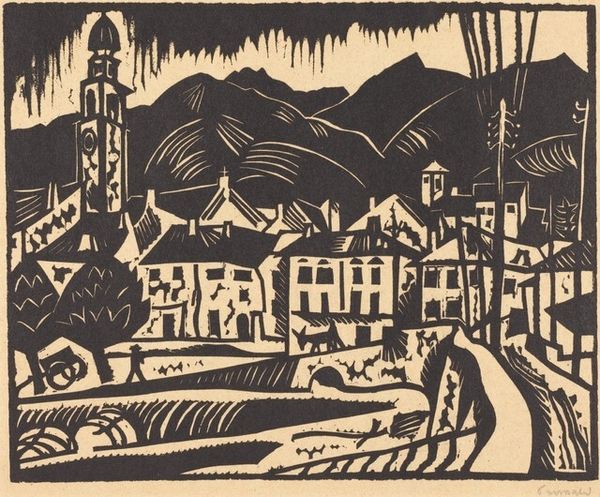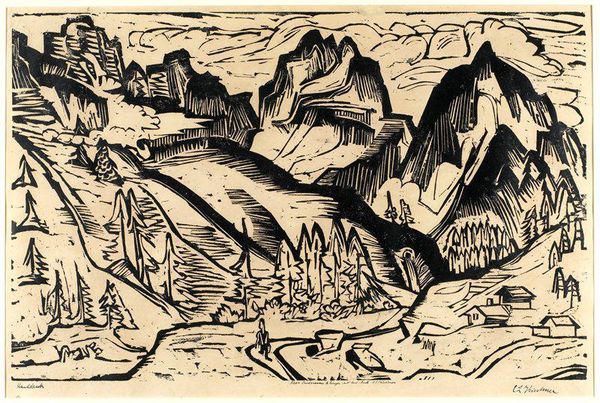
print, graphite
# print
#
landscape
#
graphite
#
cityscape
#
regionalism
Dimensions: image: 232 x 298 mm sheet: 312 x 448 mm
Copyright: National Gallery of Art: CC0 1.0
Curator: Immediately, I’m struck by the dramatic contrasts, almost theatrical in its play of light and shadow. Editor: John Charles Haley’s graphite print, dating back to 1940, offers a compelling snapshot of "Virginia City" – a place that exists within both geography and the American imagination. We need to consider the time it was created to grasp its significance. Curator: Absolutely. The way Haley uses these bold strokes evokes a sense of rugged individualism, the kind often romanticized during the Regionalism movement. It seems he's less interested in topographical accuracy and more concerned with conveying an attitude. Editor: Well, the politics of imagery during this period were certainly loaded. The Regionalists aimed to create an accessible American art, often depicting rural or small-town life as a rejection of European modernism. What power dynamics are at play here? Who is he speaking to, and about whom? Curator: It's fascinating to consider this vista through a lens of cultural nationalism and manifest destiny. Does this stylized depiction serve to reinforce certain myths about the West? We need to consider what or who is rendered invisible. What perspectives have been intentionally marginalized? Editor: Precisely. What social and political role does the art play in this context? It seems that Haley wanted to celebrate the common person, the spirit of small town America. The looming mountains serve to show the sheer magnitude of this project. What else does the image conceal, however? Curator: The formal starkness combined with his chosen theme speaks to something deeper, perhaps anxiety about the vanishing of this idealized way of life amidst urbanization. His decision to employ such stark light creates an undeniably austere landscape. Editor: By depicting the West, Haley engages with its mythic status. The scale emphasizes an enduring ideal that may conceal difficult truths and complexities. Curator: Thank you, this opens up fresh possibilities in perceiving Haley's portrayal of this historic vista, and its wider cultural consequences. Editor: A great start for listeners who are interested in digging more into how history shapes art.
Comments
No comments
Be the first to comment and join the conversation on the ultimate creative platform.
